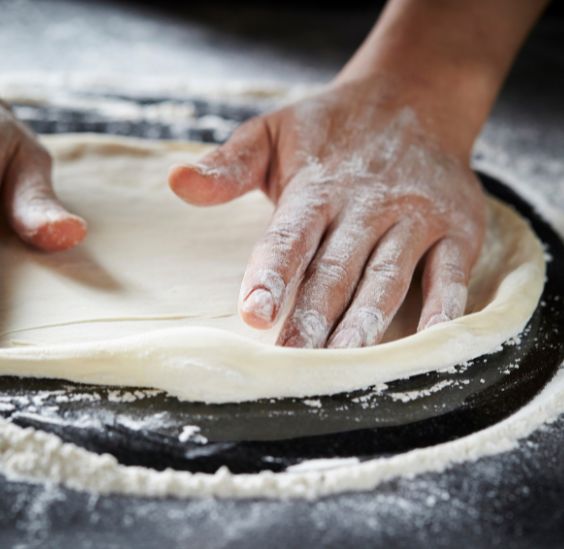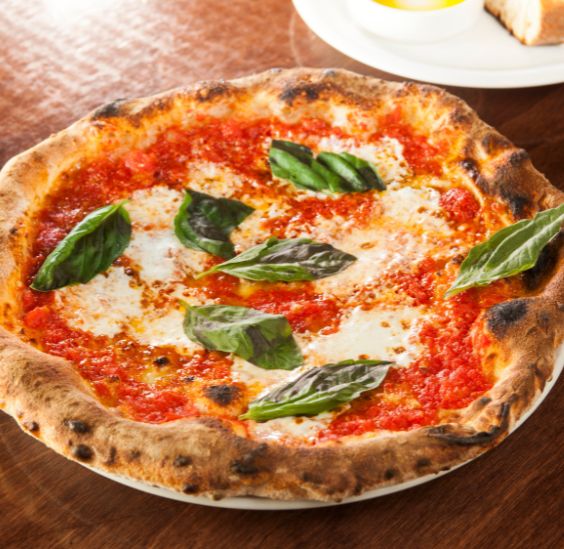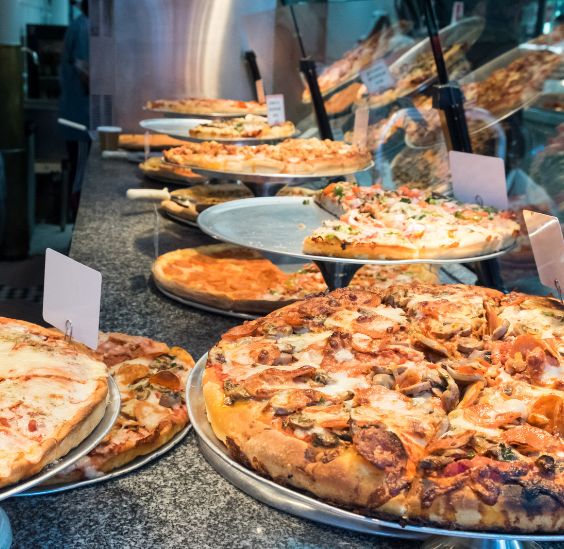Naples, Italy, is a city woven with rich culinary traditions, standing proudly as the birthplace of one of the world’s most beloved foods: pizza.
For food enthusiasts and curious travelers alike, participating in a pizza making class in Naples isn’t just a cooking lesson; it’s an immersive journey into a cultural and gastronomic heritage. This article will guide you through the essentials of choosing the perfect pizza making class, understanding the history of Neapolitan pizza, and learning why it’s cherished globally. We’ll also explore why a true Neapolitan might never reach for a slice of New York pizza, and give you an overview of the costs and duration of these deliciously educational experiences. Whether you’re a seasoned chef or a novice in the kitchen, a pizza making class in Naples promises a flavorful and enriching experience.
Choosing Your Pizza Making Class
When it comes to immersing yourself in the art of Neapolitan pizza making, the choice of class can significantly shape your experience. Naples offers a variety of classes, each with its unique atmosphere and learning style. For a more personalized and in-depth experience, a smaller class, though often pricier, is highly recommended.

Advantages of Small Classes:
Small classes provide a more intimate setting, allowing for a deeper connection with the tradition of pizza making. In such settings, the instructor can afford to give individual attention to each participant, ensuring that everyone understands the nuances of the process. This personalized guidance is crucial for mastering techniques like kneading the dough to the right consistency and understanding the delicate balance of ingredients.
Moreover, small classes often delve into the history and cultural significance of Neapolitan pizza, offering a more comprehensive experience. They foster an environment where you can engage in meaningful conversations with the instructor and fellow participants, enriching your understanding of Naples’ culinary landscape.
Large Classes – A Different Experience:
On the other hand, larger classes offer a different kind of charm. They are typically more energetic and social, providing an opportunity to meet fellow enthusiasts and tourists. These classes are often structured to give you a taste of the pizza-making process in a fun, group setting. While they may not provide the same level of personalized attention, they still offer valuable insights into the art of pizza making.
In larger classes, instructors demonstrate the process to the group, providing tips and tricks along the way. Participants then get a chance to try their hand at making their pizzas, often leading to amusing and memorable experiences. These classes are perfect for those looking for a casual and enjoyable introduction to pizza making.
Choosing the Right Class for You:
When selecting a pizza-making class in Naples, consider your personal learning style and what you hope to gain from the experience. If you’re keen on a hands-on, detailed learning experience, a smaller class is ideal. If you’re looking for a fun and casual introduction to pizza making, a larger class might be more suitable.
Costs and Duration of Pizza Making Classes in Naples
Enrolling in a pizza making class in Naples offers a unique opportunity to delve into the heart of Italian culinary culture. Understanding the costs and duration of these classes can help you choose the right experience for your interests and budget.
Cost Overview:
The cost of pizza making classes in Naples varies, reflecting the diversity and quality of experiences available. Generally, prices range from around 30 to 120 euros. Several factors influence the cost:
- Class Size: Smaller, more intimate classes typically command a higher price due to the personalized attention and in-depth instruction they provide.
- Chef’s Expertise: Classes led by renowned chefs or at prestigious pizzerias might be more expensive, given the level of expertise and reputation.
- Location: The venue of the class, whether it’s a well-known pizzeria in a popular tourist area or a more secluded spot, can also impact the price.
What’s Included:
Most classes include the cost of ingredients and the use of necessary equipment. Some might offer additional perks like a complimentary drink, an apron, or a booklet of recipes and techniques. Often, you’ll have the opportunity to enjoy the pizza you’ve made, turning the class into a delightful dining experience.
Duration:
The duration of pizza making classes typically ranges around two hours. This timeframe allows for a comprehensive yet enjoyable experience that includes:
- Introduction to Ingredients: Understanding the importance of each component, from the type of flour used to the choice of tomatoes and cheese.
- Dough Preparation: Learning the art of making and handling the perfect pizza dough.
- Topping and Baking: Instructing on how to properly top a pizza and mastering the technique of baking it in a wood-fired oven.
Choosing the Right Class:
When selecting a pizza making class in Naples, consider both the cost and the duration in relation to what you hope to gain from the experience. Are you looking for an in-depth, personalized instruction, or a more casual, group-oriented session? Your choice will impact both the cost and the nature of the class.
A pizza making class in Naples is more than a culinary lesson; it’s an immersion into a tradition that’s integral to the city’s identity. Whether you’re a food enthusiast or a casual cook, these classes offer an authentic and enriching experience, leaving you with skills and memories to cherish.

In 2017, the art of Neapolitan pizza making was inscribed on the UNESCO list of Intangible Cultural Heritage of Humanity, acknowledging its cultural and historical significance.
The History of Neapolitan Pizza
The origins and evolution of Neapolitan pizza weave a complex tale that intertwines with Naples’ cultural and culinary history. This globally beloved dish, which began as a modest street food, has deep roots in the everyday life of Naples.

Early Origins and Evolution:
Pizza in Naples dates back centuries, initially as a simple and affordable food for the working class. Its evolution was a gradual process, influenced by local ingredients and culinary traditions. The Margherita pizza, often linked to a story involving Queen Margherita of Savoy, actually reflects the long-standing tradition of using tomatoes and mozzarella in Neapolitan cuisine. Historical research suggests that pizzas resembling the Margherita existed before the often-cited royal visit in 1889, debunking the myth of its creation for the queen.
Cultural and Historical Significance:
Over time, pizza became a symbol of Neapolitan society, transcending its origins as a dish for the poor. Its rise in popularity across different social classes mirrors the cultural shifts within the city. Today, pizza stands as an emblem of Naples’ rich culinary identity, showcasing the city’s ability to transform simple ingredients into a dish celebrated worldwide.
The Journey to Global Recognition:
The global spread of Neapolitan pizza began with Italian immigration in the early 20th century, especially to the United States. Post-World War II, American soldiers stationed in Italy contributed to its international popularity. This global journey transformed Neapolitan pizza from a local specialty into a universally beloved dish.
UNESCO Recognition:
The art of Neapolitan ‘Pizzaiuolo’ was inscribed on the UNESCO Representative List of the Intangible Cultural Heritage of Humanity in 2017. This prestigious acknowledgment goes beyond the dish itself, celebrating the traditional preparation methods, including the handcrafted dough, unique spinning techniques, and wood-fired baking. It’s a recognition of the cultural and historical value that Neapolitan pizza embodies.
The history of Neapolitan pizza is a testament to the city’s culinary resilience and pride. Engaging in a pizza-making class in Naples offers more than just a cooking lesson; it’s an immersion into a tradition that has captivated taste buds around the world.
Why Neapolitan Pizza is Famous Worldwide
The global fame of Neapolitan pizza is not just a testament to its delightful taste but also to its cultural significance and traditional craftsmanship. This section explores the various factors contributing to its worldwide recognition.
Authenticity and Simplicity:
Neapolitan pizza’s worldwide acclaim stems from its authenticity and simplicity. The traditional recipe calls for high-quality, locally-sourced ingredients like San Marzano tomatoes, fresh mozzarella cheese, basil, and olive oil. These ingredients, combined with the skillful hand-stretching of the dough and its quick baking in a wood-fired oven, create a distinct flavor profile and texture, distinguishing it from other pizza styles.
Culinary Tradition and Innovation:
Neapolitan pizza is more than a dish; it’s a culinary tradition passed down through generations. The techniques and recipes have been honed over centuries, reflecting Naples’ rich history and cultural identity. Despite its adherence to tradition, Neapolitan pizza also allows for innovation, enabling chefs to express their creativity while maintaining the core aspects of the traditional pizza.
International Recognition:
The international fame of Neapolitan pizza is further solidified by its recognition by UNESCO as an Intangible Cultural Heritage of Humanity. This acknowledgment highlights the art of Neapolitan pizza making, not just for its culinary importance but also for its role in fostering community and preserving cultural identity.
Global Appeal:
Neapolitan pizza’s thin crust, charred edges, and flavorful toppings have a universal appeal, satisfying diverse palates worldwide. Its rise to global popularity is also attributed to the Italian diaspora, spreading the love for this classic dish far beyond the borders of Italy.

Neapolitan Pizza vs. New York-style Pizza
The culinary preference of Neapolitans for their traditional pizza over other popular styles, such as New York-style pizza, is rooted in deep cultural pride, taste, and the essence of authenticity. This section delves into the reasons behind this preference.

Cultural Pride and Tradition:
Neapolitan pizza is not just a culinary item; it’s a symbol of Neapolitan heritage and identity. The strict adherence to traditional methods and ingredients is a matter of local pride. This deep respect for tradition influences Neapolitan attitudes towards other pizza styles, often viewing them through the lens of their rich, culinary heritage.
Differences in Taste and Texture:
The contrast between Neapolitan and New York-style pizza is stark in terms of taste and texture. Neapolitan pizza is known for its thin, soft, and slightly chewy base, which contrasts with the typically thicker, crispier crust of New York-style pizza. The high-temperature, quick-baking process of Neapolitan pizza creates a unique char and flavor profile that is distinctly different from the slower-cooked New York style.
The Artisanal Approach:
Neapolitans take great pride in the artisanal approach to pizza making. The emphasis on handcrafted techniques and the use of specific, locally sourced ingredients is paramount. This contrasts with the more commercial and varied approach seen in New York-style pizza, where variations in ingredients and preparation methods are more common.
Local Ingredients:
The use of specific local ingredients like San Marzano tomatoes and Mozzarella di Bufala also plays a significant role in the preference for Neapolitan pizza. These ingredients are not just components of a recipe; they are part of Naples’ culinary identity and are highly regarded for their quality and flavor.
In summary, the preference for Neapolitan pizza over New York-style pizza among Neapolitans is deeply intertwined with their cultural identity, culinary traditions, and the unique characteristics of their local cuisine.





